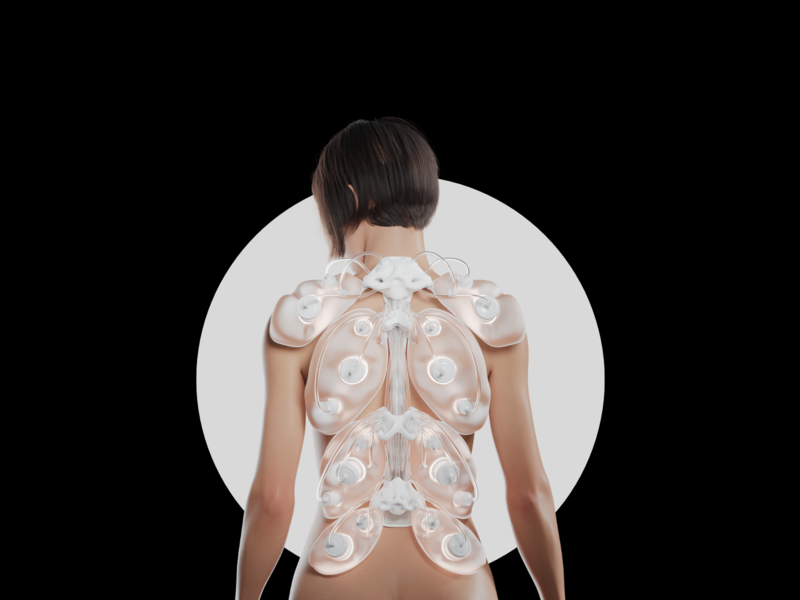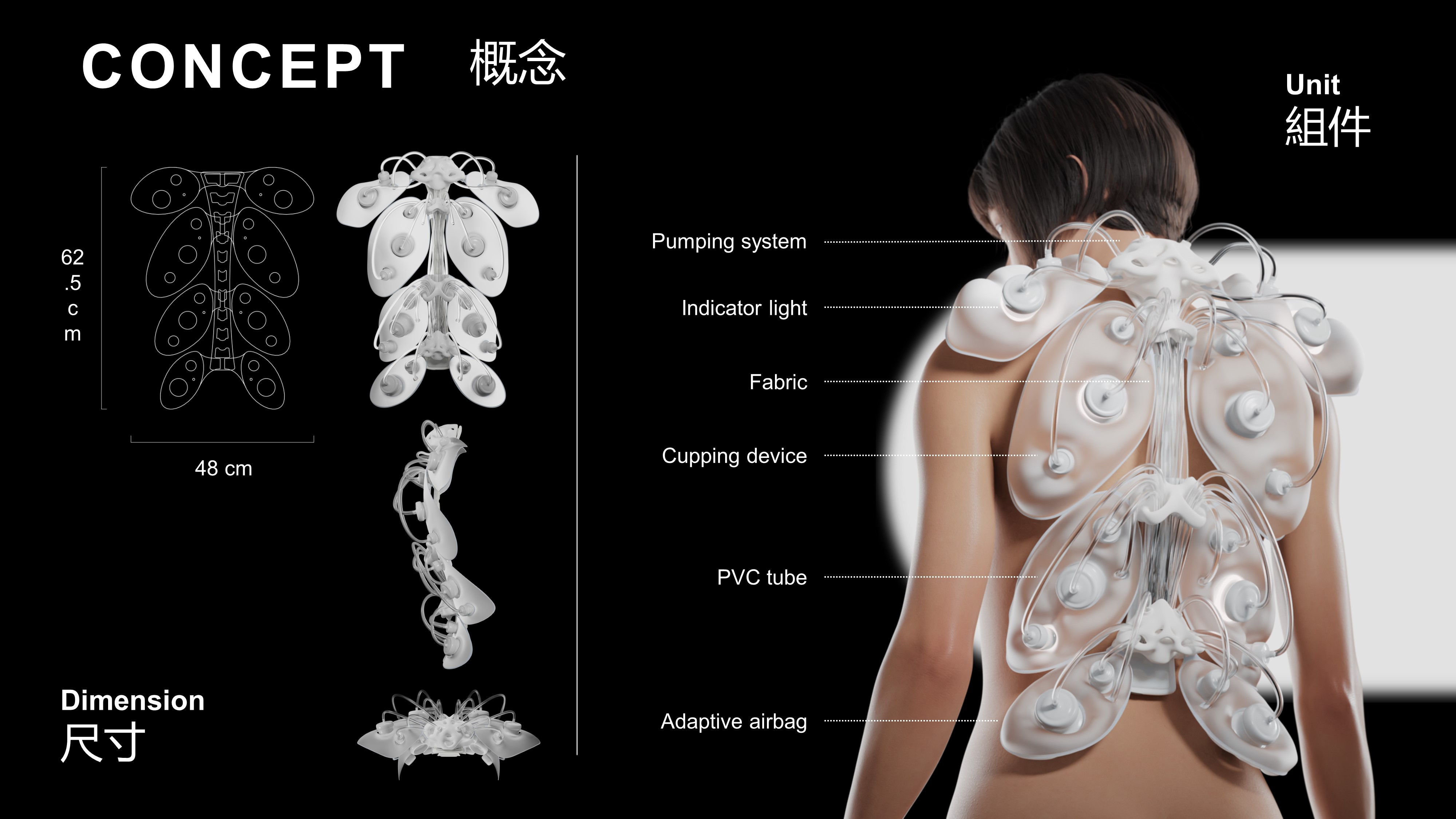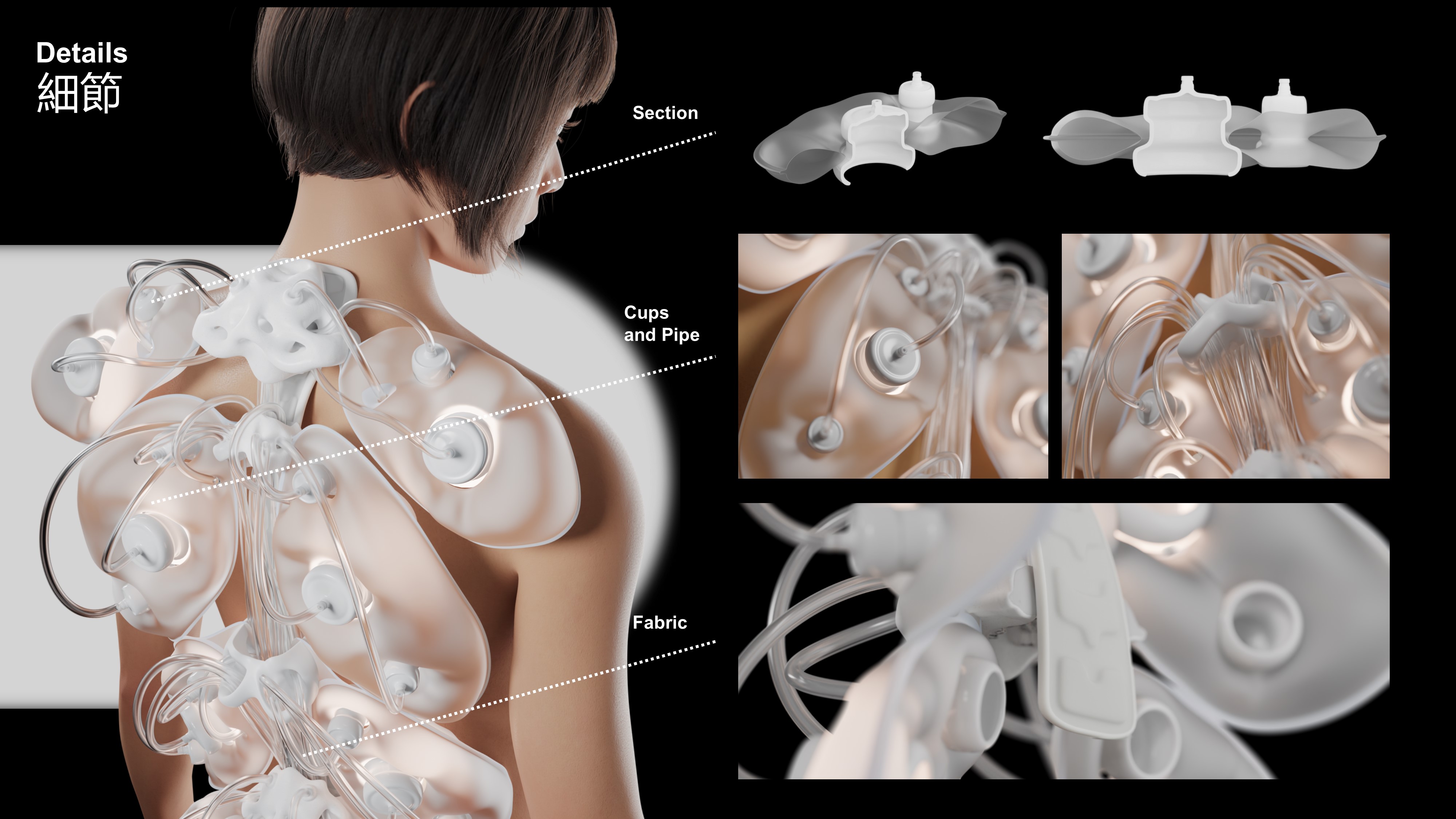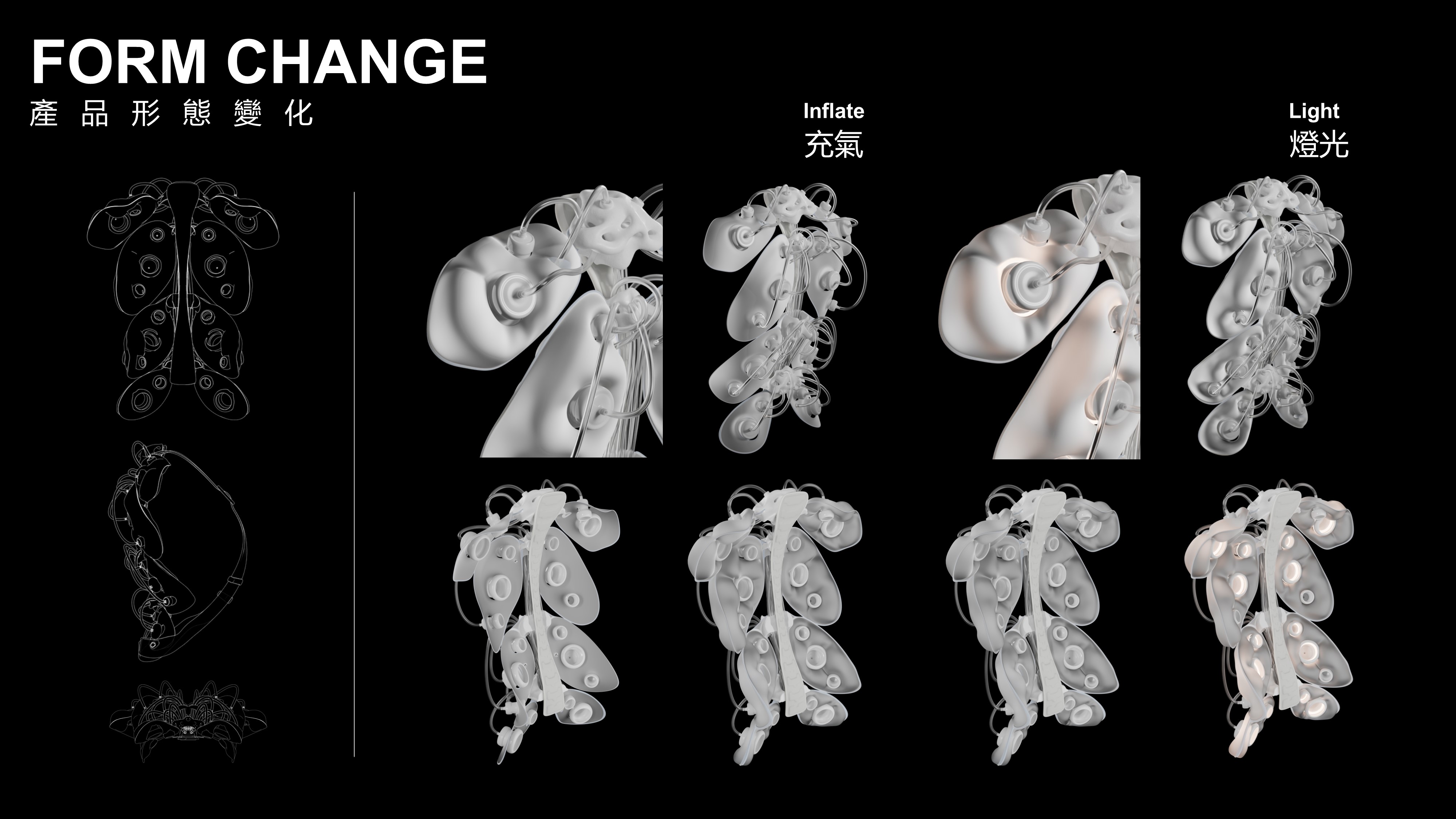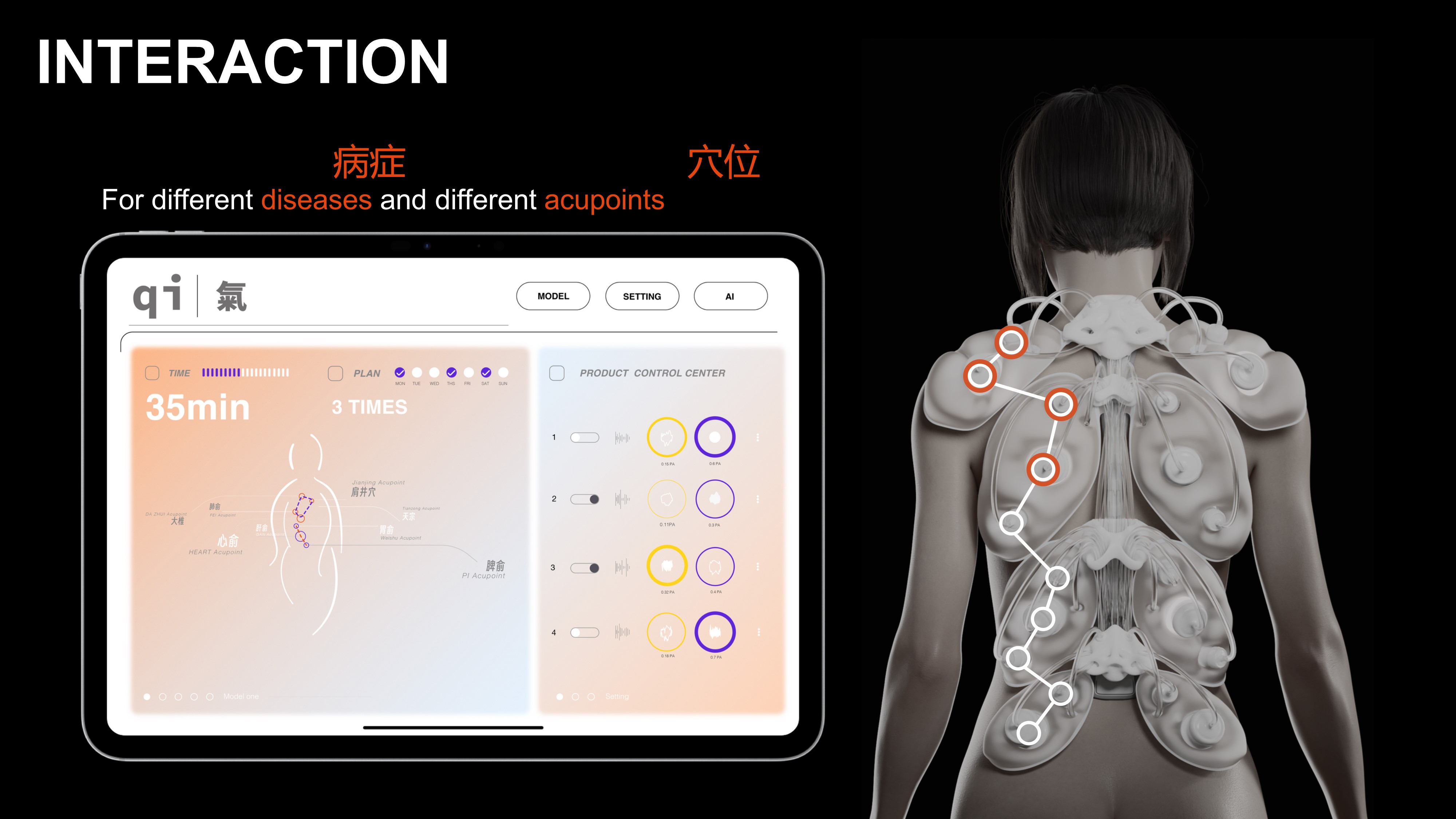Detailed Work Proposal/Additional Support Materials
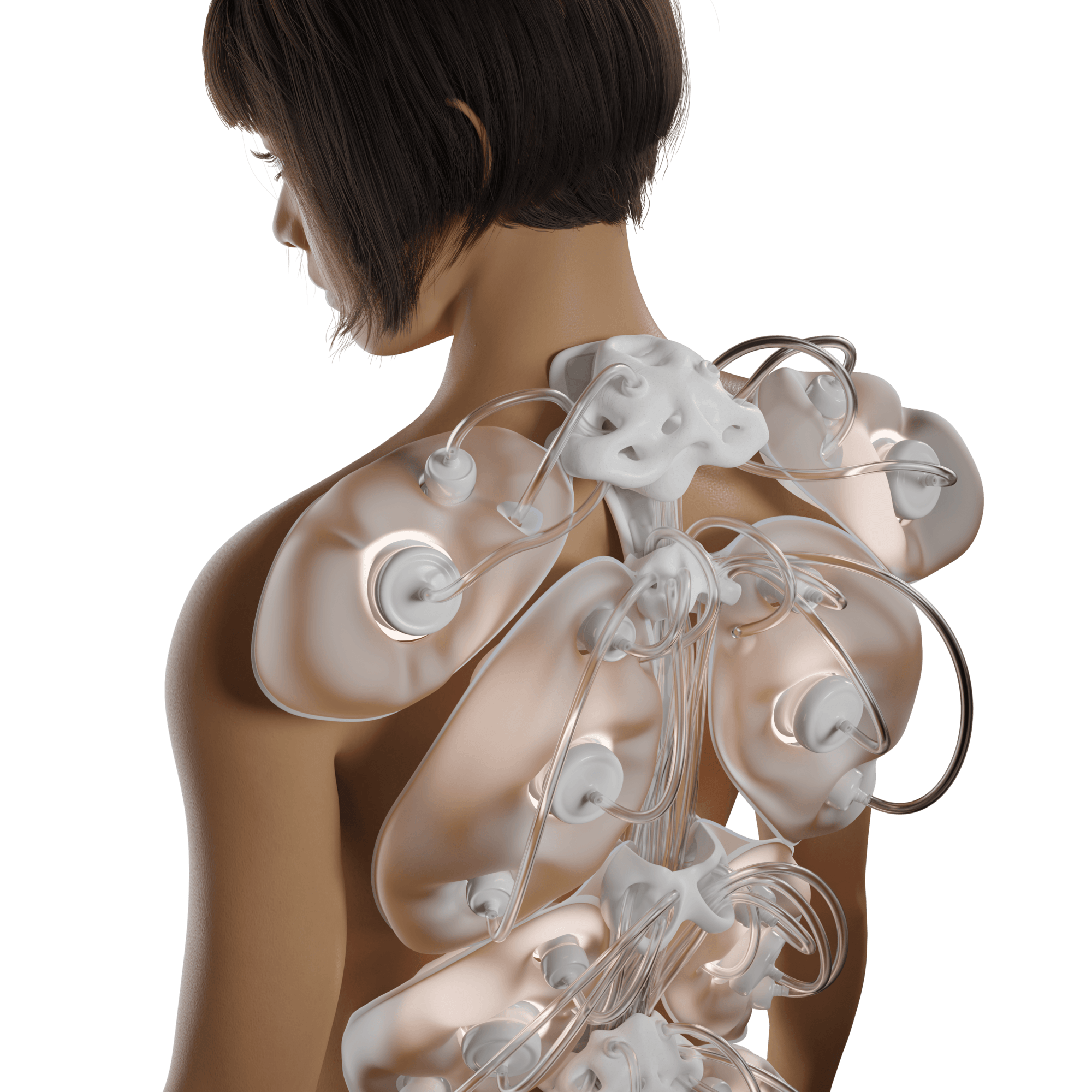
Rendering01
Product rendering
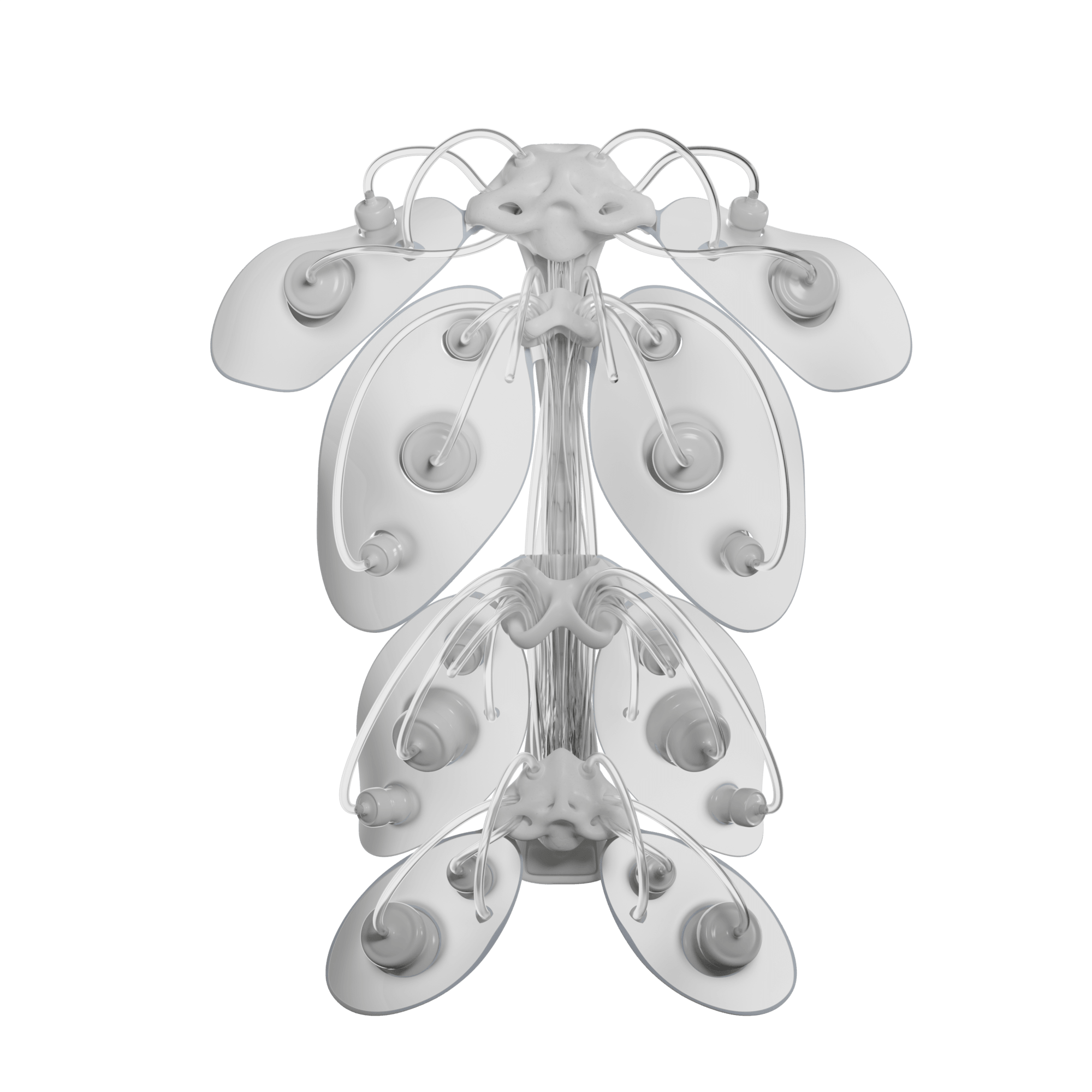
Rendering03
Product rendering
Prototype 01
Functional physical prototype part1
Prototype 02
Functional physical prototype part2
Prototype 03
Functional physical prototype on a human body mode
Into video
Machine Learning Demo
One of the function prototype: Machine Learning Demo
"Qi" is an innovative wearable device that combines traditional cupping therapy and massage for portable self-help health management. It features a flexible airbag fabric design with adjustable suction and customizable settings to meet daily health needs. The project addresses two main challenges: integrating cupping and massage into portable automatic devices and balancing function, comfort, and aesthetics with innovative fabric technology.
The design incorporates an air pump structure, airbags, and functional fabrics, inspired by natural forms like octopus tentacles. The prototype uses embroidery, glue sealing, and an integrated air pump, with machine learning ensuring precise acupoint detection for different individuals, ensuring functionality and safety.
"Qi" merges tradition with technology, offering new possibilities for personal health. Future plans include optimizing technology and exploring new health applications.
Rooted in UAL Central Saint Martins' MA Design for Industry 5.0, our team merges Chinese cultural heritage with contemporary innovation to address societal-environmental-cultural needs. The "Qi" autonomous cupping device exemplifies this vision, modernizing traditional therapy through scientific rigor and technological integration.
Leveraging machine learning, Qi generates personalized treatment protocols balancing therapeutic efficacy and comfort. Its pneumatic control system enables precision pressure modulation, preserving cupping’s cultural essence while enhancing healing outcomes. This scientific framework honors historical legacy while advancing modern applications.
Our innovation computationally decodes TCM meridian theory. An adaptive airbag matrix replicates the twelve meridians’ topology, simulating practitioners’ diagnostic "acupoint palpation." This dynamic Qi-regulation mechanism maintains bianzheng shizhi (辨证施治) personalization while creating data-driven standardization, offering a verifiable model for TCM modernization.
Targeting China’s chronic pain crisis (280M sufferers, 2023), Qi deploys a three-phase protocol:
ML-powered plans replicate traditional ‘supplementing/reducing’ techniques via precise positioning and dynamic pressure.
A thermal layer integrates moxibustion principles.
This fusion of TCM wisdom and technology lowers accessibility barriers while propelling healthcare innovation.
As a cultural-tech proposition, Qi navigates a critical AI-era challenge: positioning technology as an interpreter – not replacement – of traditional knowledge. It asserts TCM’s global relevance by digitally recontextualizing Eastern philosophy without compromising authenticity, demonstrating how ancient practices can evolve technologically while preserving cultural roots. This synthesis charts a path for heritage-driven innovation in modern medicine.
As MA Design for Industry 5.0 students at UAL’s Central Saint Martins, we benefited from the robust resources of our institution, including the Physical Computing Lab and other specialized facilities. Under the strong leadership of our Course Leader, Assa, our team engaged in an interdisciplinary collaboration, leveraging these state-of-the-art resources to push the boundaries of innovation. With the advanced technical support from our school’s labs, we successfully integrated textile craftsmanship with machine learning, culminating in a groundbreaking product. Our diverse team of professionals is fueled by a spirit of innovation, adeptly merging intelligent technology with material exploration to chart a new course for the future of design.







